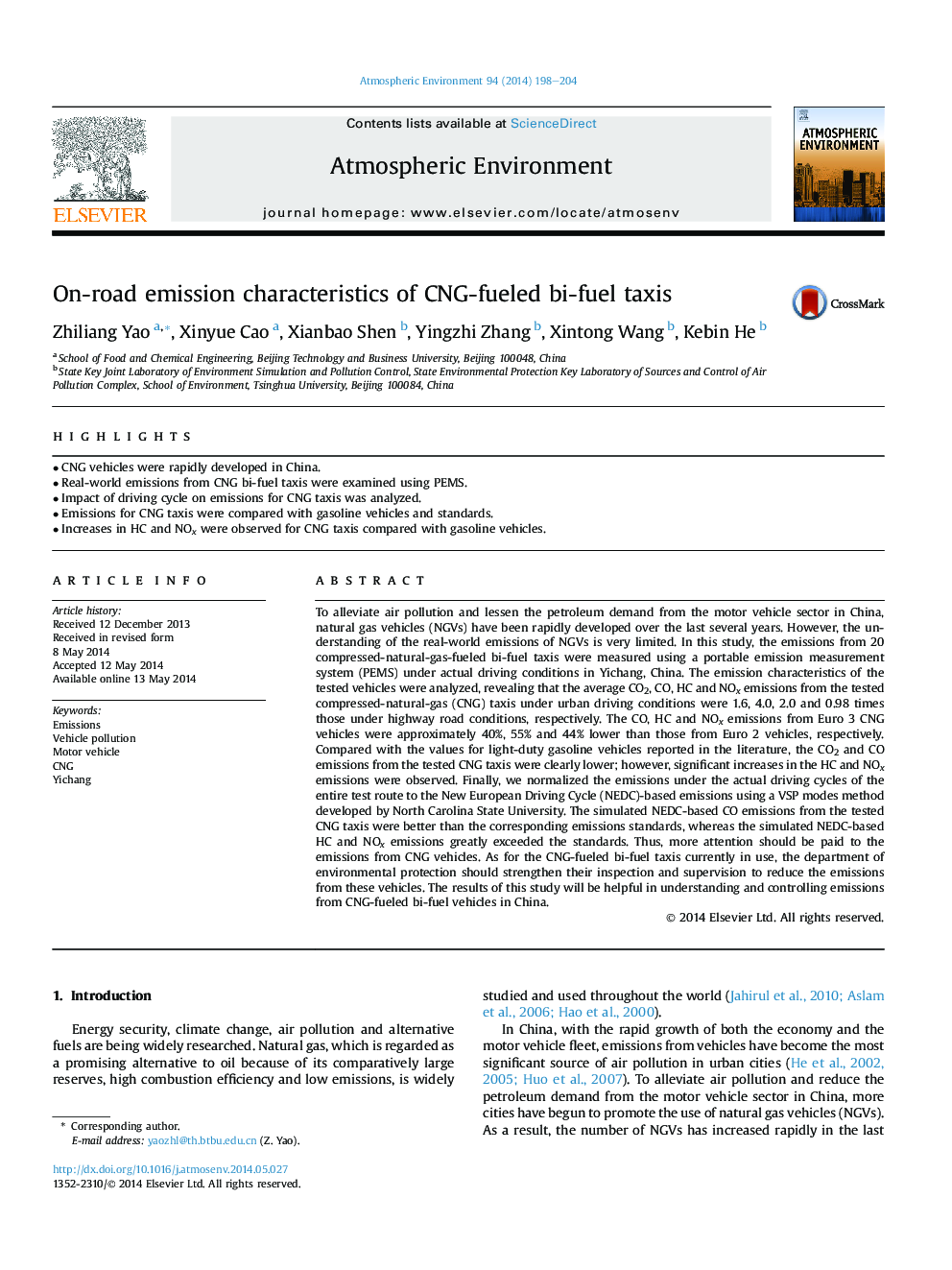| Article ID | Journal | Published Year | Pages | File Type |
|---|---|---|---|---|
| 6339554 | Atmospheric Environment | 2014 | 7 Pages |
â¢CNG vehicles were rapidly developed in China.â¢Real-world emissions from CNG bi-fuel taxis were examined using PEMS.â¢Impact of driving cycle on emissions for CNG taxis was analyzed.â¢Emissions for CNG taxis were compared with gasoline vehicles and standards.â¢Increases in HC and NOx were observed for CNG taxis compared with gasoline vehicles.
To alleviate air pollution and lessen the petroleum demand from the motor vehicle sector in China, natural gas vehicles (NGVs) have been rapidly developed over the last several years. However, the understanding of the real-world emissions of NGVs is very limited. In this study, the emissions from 20 compressed-natural-gas-fueled bi-fuel taxis were measured using a portable emission measurement system (PEMS) under actual driving conditions in Yichang, China. The emission characteristics of the tested vehicles were analyzed, revealing that the average CO2, CO, HC and NOx emissions from the tested compressed-natural-gas (CNG) taxis under urban driving conditions were 1.6, 4.0, 2.0 and 0.98 times those under highway road conditions, respectively. The CO, HC and NOx emissions from Euro 3 CNG vehicles were approximately 40%, 55% and 44% lower than those from Euro 2 vehicles, respectively. Compared with the values for light-duty gasoline vehicles reported in the literature, the CO2 and CO emissions from the tested CNG taxis were clearly lower; however, significant increases in the HC and NOx emissions were observed. Finally, we normalized the emissions under the actual driving cycles of the entire test route to the New European Driving Cycle (NEDC)-based emissions using a VSP modes method developed by North Carolina State University. The simulated NEDC-based CO emissions from the tested CNG taxis were better than the corresponding emissions standards, whereas the simulated NEDC-based HC and NOx emissions greatly exceeded the standards. Thus, more attention should be paid to the emissions from CNG vehicles. As for the CNG-fueled bi-fuel taxis currently in use, the department of environmental protection should strengthen their inspection and supervision to reduce the emissions from these vehicles. The results of this study will be helpful in understanding and controlling emissions from CNG-fueled bi-fuel vehicles in China.
